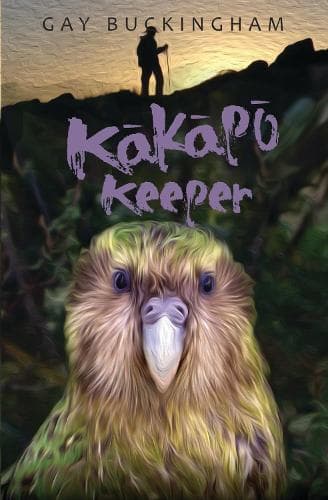Review: Kākāpō Keeper
Reviewed by Dionne Christian
Does anyone remember Allan Sherman’s novelty song Hello Muddah, Hello Fadduh (A Letter from Camp)? Gay Buckingham’s approach to her engrossing first novel Kākāpō Keeper reminded me of the song.
In the song, a child writes from summer camp to his parents complaining about how dreadful things are at fictional “Camp Granada” and wanting to come home but by the time he reaches the end of his letter, he’s settled in and relishing every moment.
Kākāpō Keeper is written as a fictional diary by Andrew Burt (14), employed as the assistant to Richard Henry the Chief Conservator based in Dusky Sound in the remote southwest corner of Fiordland National Park. Henry has been charged with preserving birds on specific islands in the area and it’s fair to say that Andrew is not at first impressed with the conditions he encounters nor the work he is tasked with.
However, during the course of a two-year stay, Andrew comes to appreciate - even delight in - the environment and his all-important job. In promotional material for the book, it says Buckingham revels in describing the coast, bush, wildlife and farming community of the area in which she grew up and that comes across in her rich descriptions of the area.
Andrew’s initial grumbling makes for a humorous way to add colour to a story; being able to see events through the eyes of a fellow young person is useful for keeping young readers — the novel will appeal to 8-12-year-olds — engaged with a book tightly packed with information.
Miss 12 said a strength of Buckingham’s novel was the sheer volume of interesting material she presents and how she weaves it into a story that is straight from our own history books and about a subject still very relevant today.
There are also maps, curios and information in pages lifted from Richard Henry’s own field guide. Once the based-on-fact story ends, there are details about the birds and their predators and resources, including photographs, about the real events of Henry's research.
Henry was indeed a real-life figure while the character of Andrew is a composite of four young men who assisted him during his time in Dusky Sound. Andrew writes to a friend called Arthur Deans, the actual name of Henry’s last assistant.
Richard Henry left Dusky Sound in 1908 believing that he had failed but as readers learn in the section The True Story, it was his meticulously-recorded observations and research that greatly assisted modern recovery teams to save the kākāpō. That adds extra poignancy to Kākāpō Keeper and will provide a valuable idea for young readers to muse on. Sometimes good things take time.
Reviewed by Dionne Christian
